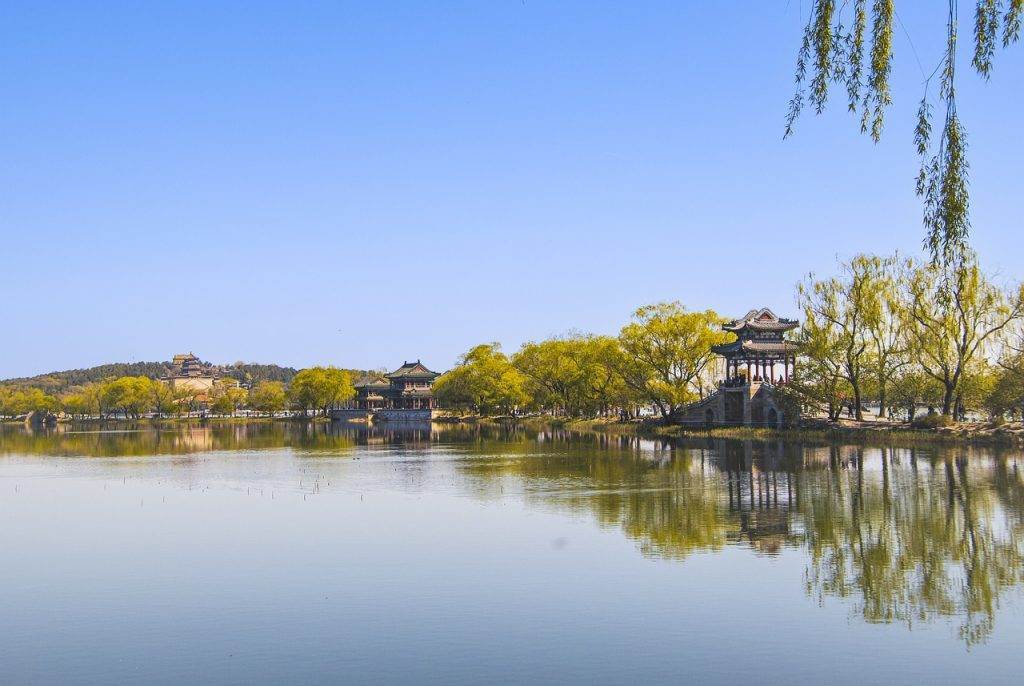Old houses have a remarkable ability to withstand the test of time, standing strong and sturdy while newer structures come and go. This fascinating phenomenon has puzzled architects, builders, and historians alike for centuries. The secret to their longevity lies in a combination of ingenious construction techniques, durable materials, and meticulous maintenance. In this article, we will explore the reasons behind the exceptional lifespan of old houses, delving into the historical significance, architectural design, and structural durability that have allowed these timeless structures to endure throughout generations.

This image is property of pixabay.com.
Materials Used
Old houses are renowned for their longevity, and one significant factor contributing to this durability is the quality of materials used in their construction. From the foundation to the roof, old houses were built with robust and durable materials that have stood the test of time.
Quality of materials
The materials used in the construction of old houses were often of superior quality compared to modern materials. Craftsmen paid meticulous attention to sourcing the best materials available, as they understood the importance of using sturdy and long-lasting materials. The use of high-quality materials not only contributed to the initial strength of the structure but also allowed old houses to withstand the test of time.
Natural materials
Old houses often incorporated natural materials such as timber, stone, and clay, which inherently possess remarkable durability. These materials have proven to be resilient over centuries, providing the necessary strength and stability to withstand environmental and weather fluctuations. The use of natural materials not only lends a timeless aesthetic appeal to old houses but also contributes to their longevity.
Durability of materials
The materials used in old houses were chosen for their durability. Stone, for example, has excellent strength and is resistant to wear and weathering. The use of durable building materials ensured that old houses could withstand the elements and last for generations. From the solid foundation to the sturdy framework, the durability of materials used in old houses is a key factor in their remarkable longevity.
Construction Techniques
Aside from the quality of materials, the construction techniques employed in the building of old houses also contribute to their longevity. The craftsmanship and attention to detail exhibited during the construction process play a crucial role in ensuring the structural integrity and longevity of these homes.
Craftsmanship
Old houses were often constructed by skilled craftsmen who possessed a deep understanding of traditional building methods. These craftsmen paid great attention to detail, employing precise techniques to ensure the stability and longevity of the structures. Their expertise and commitment to quality craftsmanship are evident in the durability of old houses that still stand strong to this day.
Attention to detail
Old houses were built with an exceptional level of attention to detail. Every joint, corner, and connection was carefully crafted and meticulously fitted to ensure tight and secure construction. This meticulous attention to detail in the construction process enhances the overall structural integrity of the house and contributes to its long-lasting nature.
Proper foundations
A strong and solid foundation is paramount in ensuring the longevity of any structure, including old houses. The construction techniques utilized in old houses placed a strong emphasis on creating robust foundations that could withstand the test of time. Deep footings, proper drainage systems, and adequate support were implemented to ensure the stability and longevity of these homes.

This image is property of pixabay.com.
Minimal Environmental Impact
Old houses also excel in their minimal environmental impact, thanks to the sustainable building practices employed during their construction. In an era where environmental concerns are at the forefront, the eco-friendliness of old houses is worth noting.
Sustainable building practices
Old houses were often built with sustainable practices in mind. Builders utilized local and natural materials, reducing the energy required for transportation and minimizing the carbon footprint. Furthermore, the construction techniques employed in old houses favored longevity and durability, reducing the need for frequent repairs or reconstructions that would contribute to waste generation.
Less energy consumption
Old houses were designed with natural energy efficiency in mind. Large windows were strategically placed to maximize natural illumination, reducing the reliance on artificial lighting during daylight hours. Additionally, effective insulation techniques, such as thick walls and well-placed materials, aided in maintaining a comfortable indoor temperature, minimizing the need for excessive heating or cooling, and reducing energy consumption.
Reduced waste
The construction of old houses prioritized the efficient use of materials. Builders aimed to minimize waste by carefully planning and utilizing every component to its fullest potential. The lack of wasteful practices during the construction phase contributes to the overall sustainability of old houses, as they were built with a minimal impact on the environment.
Adaptability and Expansion
Old houses exhibit a remarkable potential for adaptability and expansion, allowing homeowners to modify their living spaces to meet their evolving needs over time.
Flexible layouts
Old houses were often designed with flexible layouts that could accommodate various functional needs. The spacious nature of these homes provided ample opportunities for repurposing rooms and adapting the space to fit different lifestyles. This adaptability is a significant advantage as it allows residents to modify their homes without undergoing major renovations or compromising the structural integrity.
Easy to modify
Old houses were constructed in a way that makes modifications and renovations relatively straightforward. The sturdy construction and architectural features of old houses, such as load-bearing walls, open floor plans, and accessible attic spaces, allow for easy modifications and extensions. Whether it is adding a new room or reconfiguring the existing space, old houses offer homeowners the freedom to adapt their homes to their changing needs.
Expansion possibilities
Old houses often have vast surrounding land that allows for potential expansions. Whether it is adding an additional wing or constructing an outdoor living space, the expansive land associated with old houses provides ample room for expansion. This inherent potential for growth and expansion ensures that old houses can continue to meet the needs and preferences of their occupants for many generations.

This image is property of pixabay.com.
Maintenance and Upkeep
Regular maintenance and proper upkeep are critical components in prolonging the lifespan of old houses. The commitment to regular maintenance ensures that the structure remains in optimal condition, while properly addressing repairs and replacements when necessary.
Regular maintenance
Old houses require regular maintenance to preserve their integrity. From routine cleaning to inspections of the structural components, regular maintenance helps identify and address any potential issues before they escalate. By staying proactive through regular maintenance, homeowners can mitigate potential damage and prolong the lifespan of their old houses.
Replacement and repair
Over time, certain components of an old house may require replacement or repair. However, the durability and inherent strength of old houses make these restoration efforts worthwhile. Whether it is replacing worn-out roofing materials or repairing deteriorating foundations, addressing necessary replacements and repairs in a timely manner is crucial in preserving the long-lasting nature of old houses.
Preservation efforts
Preservation societies and organizations play a significant role in maintaining the historical and architectural value of old houses. The dedicated efforts of these establishments contribute to the long-term preservation of old houses, ensuring their lasting legacy for generations to come. By advocating for proper maintenance, restoration, and historical significance, preservation efforts play an integral part in extending the lifespan of old houses.
Location and Climate
The location and climate in which old houses are situated also contribute to their exceptional longevity. Consideration of the environment and adaptation to weather conditions is a crucial aspect of their construction.
Suitability for the environment
Old houses were often designed and constructed considering the surrounding environment. Architects and builders took into account factors such as topography, prevailing wind directions, and exposure to sunlight to ensure the house’s suitability for the specific location. By adapting the design to harmonize with the environment, old houses can withstand the natural elements and remain resilient over time.
Well-adapted to weather conditions
The design and construction of old houses took into account the prevalent weather conditions in their respective regions. Whether it is heavy snowfall, high winds, or intense heat, old houses were built to withstand these challenges. From robust roofing materials to well-insulated walls, every aspect of the construction aimed to ensure the house’s stability and comfort, regardless of the prevailing climate.
Natural insulation
Old houses often possess excellent natural insulation properties. The use of materials such as stone, clay, and wood provided inherent thermal insulation to the structures. Their natural density and composition allowed old houses to retain heat during colder seasons and remain cool during warmer months. This natural insulation contributes to energy efficiency, reducing the reliance on artificial heating and cooling systems and prolonging the longevity of the structure.

Building Codes and Standards
The adherence to building codes and standards played a pivotal role in the construction of old houses. Strict regulations ensured that the construction processes met high-quality standards, contributing to their exceptional durability.
Stringent regulations
Building codes and regulations were established to ensure the safety and quality of constructions. The stringent regulations in place during the construction of old houses compelled builders to adhere to specific guidelines and standards. This commitment to quality control helped create structures that could withstand the test of time.
Strict adherence to codes
Builders of old houses demonstrated a strict adherence to building codes and standards. By following the prescribed construction techniques, materials, and safety measures, they ensured the longevity and structural stability of the houses. The rigorous adherence to codes and regulations during the construction phase is a key factor in old houses’ ability to last for centuries.
Quality control
Quality control measures were a fundamental aspect of the construction of old houses. Builders and craftsmen implemented rigorous quality control procedures to monitor every phase of construction, identifying and rectifying any potential flaws or defects. This attention to detail and commitment to quality control significantly contributed to the longevity and overall strength of old houses.
Historical Significance
Old houses hold not only architectural and structural value but also carry deep historical significance. Their preservation and cultural significance contribute to their continued existence and appreciation.
Preservation efforts
Efforts to preserve old houses are driven by their historical and cultural value. Preservation organizations invest considerable resources and efforts into maintaining and restoring old houses to their original glory. By recognizing the historical significance of these houses, preservationists ensure that future generations can appreciate their unique cultural heritage.
Cultural significance
Old houses often serve as symbols of cultural heritage, representing a bygone era. They offer valuable insights into the architectural, social, and cultural aspects of the time they were constructed. Preserving and maintaining old houses allows communities to connect with their past, providing a tangible link to history and cultural identity.
Symbol of heritage
Old houses stand as physical symbols of a community’s heritage and traditions. They serve as a testament to the craftsmanship and architectural uniqueness of their time, preserving cultural identity for generations to come. The appreciation and recognition of old houses as symbols of heritage ensure their continued existence and celebration.

Emphasis on Longevity
The construction of old houses was often guided by a long-term perspective, emphasizing durability and longevity. This forward-thinking approach contributes to their ability to withstand the test of time.
Long-term planning
Builders of old houses approached construction with a long-term view. They understood the importance of durability and invested in materials and construction techniques that could withstand the passage of time. This future-oriented planning ensured that old houses were built to last, withstanding the challenges of wear and degradation.
Attention to durability
Durability was a paramount consideration in the construction of old houses. Builders sought longevity in their creations, carefully selecting materials known for their strength and resistance to degradation. The meticulous attention to durability throughout the construction process contributes to the remarkable longevity of old houses.
Intergenerational homes
Old houses were often built as intergenerational homes, designed to accommodate and serve multiple generations of the same family. The emphasis on longevity in these constructions was evident in the architectural layouts and functionality. Old houses were designed with ample space, separate living areas, and flexible layouts to accommodate the evolving needs of extended families, ensuring their continued relevance and use over generations.
Inherent Strength and Stability
Perhaps the most evident factor contributing to the longevity of old houses is their inherent strength and stability. These qualities are a result of the solid construction techniques employed and the strength of the materials used.
Solid construction techniques
Old houses were constructed using time-tested, solid construction techniques. The employment of load-bearing walls, solid timber frames, and sturdy foundations ensured the overall stability and structural integrity of the houses. These construction techniques, perfected over centuries, allow old houses to withstand external forces and maintain their strength over time.
Structural integrity
The structures of old houses are characterized by their inherent structural integrity. The architectural design, coupled with skilled craftsmanship, resulted in homes capable of bearing considerable weight and withstanding external pressures. The structural integrity of old houses remains a testament to the meticulous engineering and construction principles employed during their construction.
Strength of materials
The materials used in the construction of old houses possess natural strength and durability. Stone, timber, and clay are known for their resilience and ability to withstand environmental forces. Combined with meticulous construction techniques, the inherent strength of these materials contributes to the longevity of old houses. From the solid stone walls to the robust timber framework, the strength of materials used ensures the structural stability and lasting nature of these historical homes.
In conclusion, old houses last so long due to a combination of factors that include the quality of materials used, the craftsmanship and attention to detail during construction, minimal environmental impact, adaptability and expansion possibilities, regular maintenance and upkeep, suitability for the environment and weather conditions, adherence to building codes and standards, historical significance, emphasis on longevity, and inherent strength and stability. The convergence of these factors in the construction of old houses enables them to withstand the test of time and remain standing as symbols of heritage and architectural excellence for generations to come.
